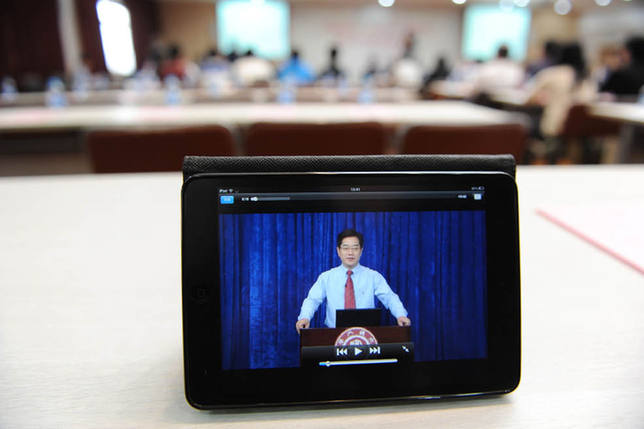The E-learning Miracle
Educational expenditure accounts for a substantial proportion of family consumption in China. Deloitte & Touche statistics show that the worth of China’s education market stood at RMB 960 billion in 2012. Taobao reported education merchandise sales of RMB 330 million for that year, one third of which came from textbooks and reference books and RMB 200 million from course subscriptions.
The 2012 Sohu Education Industry White Paper shows that there is a robust demand in China for academic and vocational training and professional qualifications, 57 percent of the total stemming from workers.
New Oriental CEO Yu Minhong once asserted that modern technologies like the Internet would precipitate over the coming three to five years a massive reform of online study. Some start-ups have already sworn to “duplicate the Taobao model in education.” Xue.taobao.com, with its strong base of potential customers, thanks to the company’s established market status and reputation, has indeed unleashed a revolutionary tide of e-learning. Moreover, independent of schools or any other institutions, Taobao has relative autonomy as to the pricing of its quality brand.
|
 |
|
A Shanghai student watches a lecture on his iPad. |
Pinpoint the Crux of Traditional Education
Mei Jingsong, supervisor of the educational section of sina.com.cn, has noted a steep rise over the past year in e-learning and the big data industry in China, and that a number of enterprises have joined this gold rush. The key to success for them, he says, is to pinpoint and meet the diverse educational needs of different client groups.
Gong Haiyan resigned her position as CEO of jiayuan.com, a dating website, in 2012 to set up tizi.com, an educational resource sharing platform, which officially launched last November. Her dream is to build a “ladder” (tizi meaning ladder) for students, their teachers, and also their parents, from kindergarten through to 12th grade, namely K12 education.
The website’s surveys of hundreds of teachers and families have given Gong a deep understanding of issues of concern among the three groups that the current educational system has failed to address. From teachers’ point of view they include the oppressive burden of class preparation, compiling exam papers, and marking. Students complain about the ineffectiveness of passive study, the dearth of up-to-date teaching resources, and their reluctance to ask teachers questions in front of the whole class. Parents, meanwhile, worry about their inability to guide children through their studies and their lack of understanding about the realities of their children’s learning experience.
